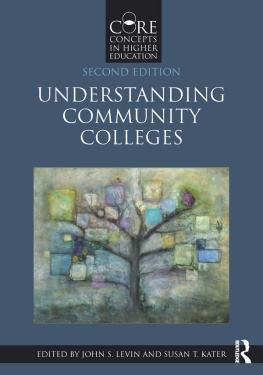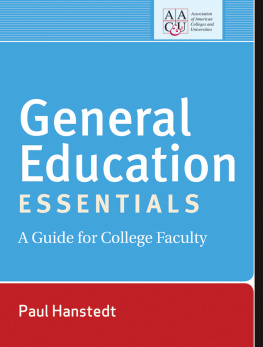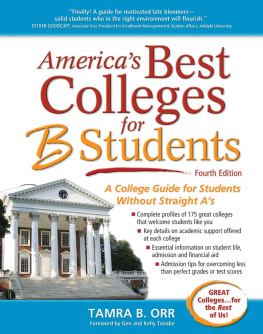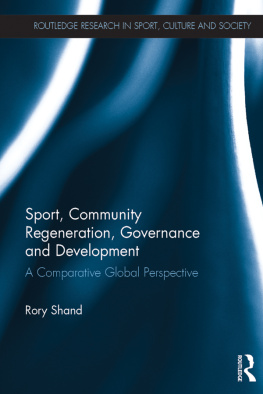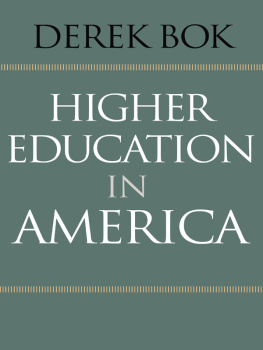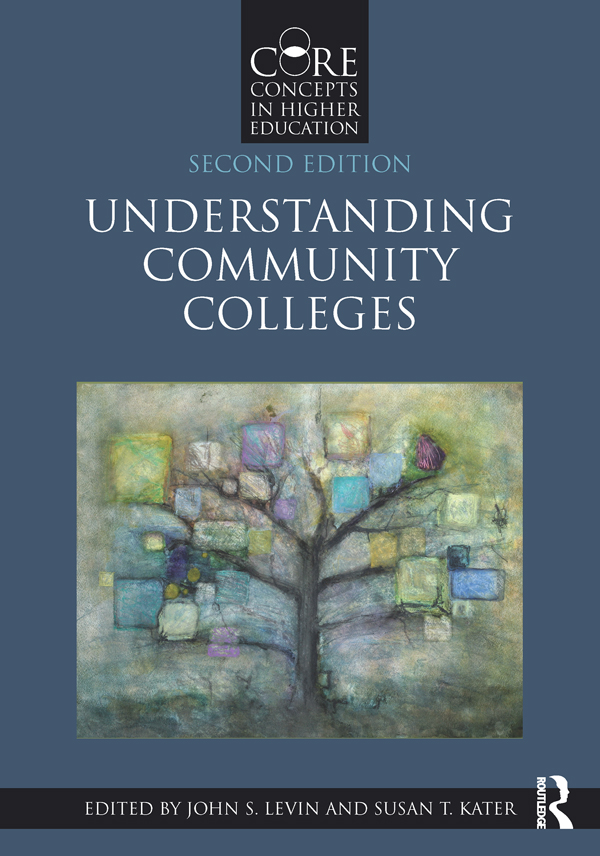Understanding Community Colleges
Understanding Community Colleges provides a critical examination of contemporary issues and practices and policy of community colleges. This contributed volume brings together highly respected scholars as well as new scholars for a comprehensive analysis of the community college landscape, including management and governance, finance, student demographics and development, teaching and learning, policy, faculty, and workforce development. Written for students enrolled in higher education and community college graduate programs, as well as social sciences scholars, this provocative new edition covers the latest developments in the field, including trends in enrollment, developmental education, student services, funding, and shared governance. At the end of each chapter, the Questions for Discussion section helps to bridge the gap between research and practice.
John S. Levin is Professor of Higher Education at the University of California, Riverside, USA.
Susan T. Kater is Associate Vice Chancellor, Institutional Strategy, Research, and Effectiveness at the Maricopa County Community Colleges, and Adjunct Faculty at Northern Arizona University, USA.
Core Concepts in Higher Education
Series Editors: Edward P. St. John and Marybeth Gasman
The History of U.S. Higher Education: Methods for Understanding the Past
Edited by Marybeth Gasman
Understanding Community Colleges
Edited by John S. Levin and Susan T. Kater
Public Policy and Higher Education: Reframing Strategies for Preparation, Access, and College Success
Edited by Edward P. St. John, Nathan Daun-Barnett, and Karen M. Moronski-Chapman
Organizational Theory in Higher Education
Kathleen Manning
Diversity and Inclusion: Supporting Racially and Ethnically Underrepresented Students in Higher Education
Rachelle Winkle-Wagner and Angela M. Locks
Fundraising and Institutional Advancement: Theory, Practice, and New Paradigms
By Noah D. Drezner and Frances Huehls
Student Development Theory in Higher Education: A Social Psychological Approach
By Terrell L. Strayhorn
Law and Social Justice in Higher Education
By Crystal Renee Chambers
Qualitative Inquiry in Higher Education Organization and Policy Research
By Penny Pasque and Vicente Lechuga
American Higher Education: Issues and Institutions
By John R. Thelin
Understanding Community Colleges
Second Edition
Edited by
John S. Levin and Susan T. Kater
Second edition published 2018
by Routledge
711 Third Avenue, New York, NY 10017
and by Routledge
2 Park Square, Milton Park, Abingdon, Oxon, OX14 4RN
Routledge is an imprint of the Taylor & Francis Group, an informa business
2018 Taylor & Francis
The right of the John S. Levin and Susan T. Kater to be identified as the authors of the editorial material, and of the authors for their individual chapters, has been asserted in accordance with sections 77 and 78 of the Copyright, Designs and Patents Act 1988.
All rights reserved. No part of this book may be reprinted or reproduced or utilised in any form or by any electronic, mechanical, or other means, now known or hereafter invented, including photocopying and recording, or in any information storage or retrieval system, without permission in writing from the publishers.
Trademark notice: Product or corporate names may be trademarks or registered trademarks, and are used only for identification and explanation without intent to infringe.
First edition published by Routledge 2013
Library of Congress Cataloging-in-Publication Data
Names: Levin, John S., author. | Kater, Susan, author.
Title: Understanding community colleges / edited by John S. Levin &
Susan T. Kater.
Description: Second edition. | New York : Routledge, 2018. |
Series: Core Concepts in Higher Education
Identifiers: LCCN 2017050395 | ISBN 9781138288126 (Hardback) |
ISBN 9781138288133 (Paperback) | ISBN 9781315268071 (eBook) |
ISBN 9781315268071 (Master) | ISBN 9781351974981 (Web PDF) |
ISBN 9781351974974 (ePub) | ISBN 9781351974967 (Mobi-Pocket/Kindle)
Subjects: LCSH: Community collegesUnited States. | Community college studentsUnited StatesCase studies.
Classification: LCC LB2328.15.U6 U64 2018 | DDC 378.1/5430973dc23
LC record available at https://lccn.loc.gov/2017050395
ISBN: 978-1-138-28812-6 (hbk)
ISBN: 978-1-138-28813-3 (pbk)
ISBN: 978-1-315-26807-1 (ebk)
Typeset in Minion
by Keystroke, Neville Lodge, Tettenhall, Wolverhampton
CONTENTS
KEN MEIER
LINDSEY E. MALCOM-PIQUEUX
JOAN B. HIRT AND TARA E. FRANK
AMAURY NORA, VINCENT D. CARALES, AND RIPSIM K. BLEDSOE
YI LEAF ZHANG AND LINDA SERRA HAGEDORN
VIRGINIA MONTERO-HERNANDEZ AND CHRISTINE CERVEN
DOLORES PERIN
DEBRA D. BRAGG
JOHN S. LEVIN
MARILYN J. AMEY AND PAMELA L. EDDY
SUSAN T. KATER AND CARRIE B. KISKER
JAMES C. PALMER AND RICHARD M. ROMANO
JOHN S. LEVIN, SUSAN T. KATER,
AND ARIADNA I. LPEZ DAMIN
FIGURES
TABLES
It is a great pleasure to reintroduce Understanding Community Colleges, edited by John S. Levin and Susan T. Kater. The first edition provided foundations for the study of communities as part of the graduate curriculum in higher education and student affairs. The second edition digs further into the social injustices that educators face as they struggle to actualize the missions of these vital institutions.
While originally conceived of as providing initial gateways into college and careers for students who were adequately prepared for their states four-year institutions in high schools with limited college-preparatory opportunities, community colleges are now on the front line of the battle against the growing inequality evident in nations engaged in the global economy. In the new economy many low-income students are prepared academically for study in their states top public universities, but are channeled into underfunded two-year institutions that have historically cooled down aspirations rather than accelerate learning. They still serve students who are underprepared, but must also provide access to advanced learning opportunities for students who were denied access to more elite colleges due to lack of funds, an artifact of the declining state and federal investment in need-based student aid. More critically community colleges not only serve overwhelming numbers of low-income and minority students, but they are underfunded, using more part-time teachers than full-time faculty.
The chapter authors in this volume explore challenges of retaining the historical mission in these rapidly changing times. They discuss the challenges facing faculty, students, and administrators in institutions serving growing numbers of adults and traditional college-age students seeking education to survive economically in regional workforces that require technical preparation for entry-level jobs. Still motivated by a hope for educational uplift, many students in two- and four-year programs in community colleges and senior institutions often attain higher levels of education than their parents and grandparents, but struggle to maintain a foothold in the middle class.

